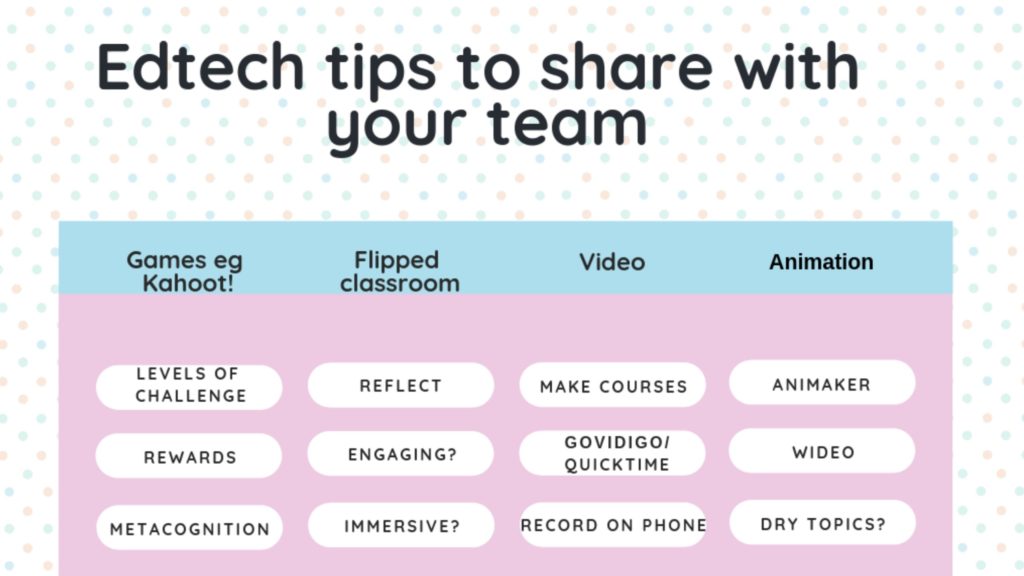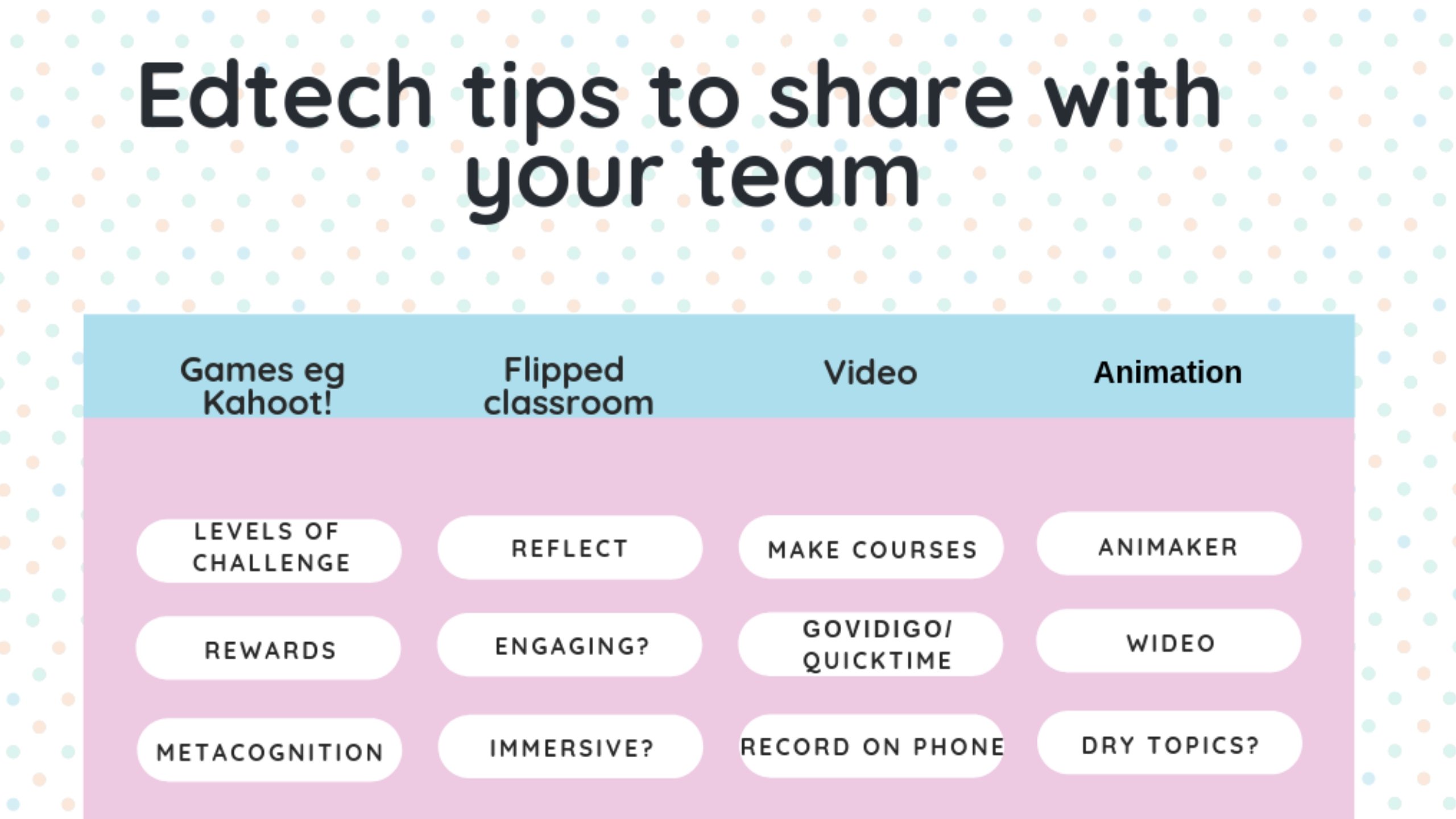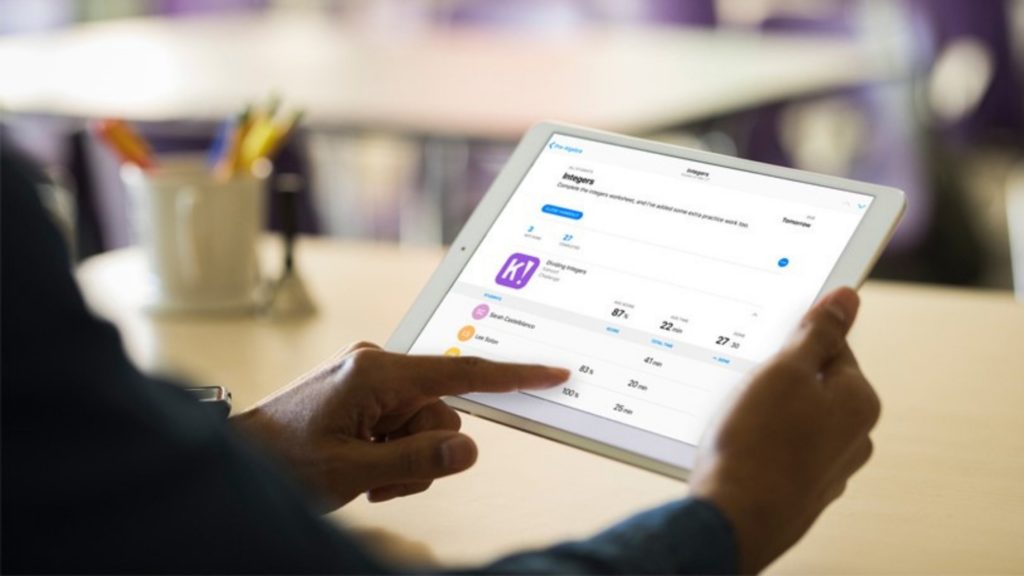10 essential edtech ideas to share with your team

This blog will provide some food for thought in terms of how you can use edtech to make your working life more enjoyable.
I will explore a variety of edtech-related ideas from a slightly different perspective, which should freshen up your approach to technology-enhanced learning. The focus is not just on more interesting lessons but also on developing ways to enrich your students’ experience of learning.
1. Game of two halves
You’re probably already familiar with game-based student response systems like Kahoot! (their exclamation mark, not mine). Whether you are familiar or not, you can benefit from trying it out and reflecting on it.
For example, how can you provide a stimulating environment, offer staggered levels of challenges and assess with clarity and ease? Would a Kahoot! survey remove the anxiety around the leaderboard? A critical reflection on your use of Kahoot! could help kick enhance your classroom, where the name of the game should always be learning (not just participating).
2. Flipping amazing
As you will know, ‘flipping’ the classroom provides students with online materials, often on video, that support learning. Have you had a chance to ‘flip the classroom’ and assess its effectiveness? How could you make the resources more engaging, immersive? Have you gathered and acted on feedback from your students on your flipped learning resources?
3. Yawn-free video
High quality mobile phone cameras and developments in software have made it easy to create video courses to support and enhance learning. Apps like Govidigo and Quicktime make it easy to turn your Powerpoint into a video, complete with voiceover.
Govidigo does this by enabling you to record your screen via a Google Chrome extension. The challenge for your team – make a video course that isn’t at all boring!

4. Toontastic
Animation tools like Animaker are free, accessible and simple ways to create basic animations. Choose from a range of templates and allow you and your students to make fun animations about potentially dry topics. The numerous paid options like Wideo offer a free trial if you want to experiment.
5. Get Pinning
Have you considered using Pinterest for learning? Try to use Pinterest as it should be used. It is a social search engine, which is great for generating visually appealing tabs to help narrow searches.
You can also ask your students to make their own subject or topic specific boards, where they can strike a balance between creating and curating content.
6. Find your voice
Isn’t it strange that teachers have no problem presenting in front of a class but often shy away from recording their voice? Have you ever thought about how your students would feel if you provided feedback on their work by recording your voice?
For powerful audio feedback, try recording your voice onto Audacity or Garageband, then adding to an assignment on Blackboard or even Turnitin. You can also add an audio commentary onto G-Suite documents.

7. Don’t lose your brain
Have you ever regretted wiping your whiteboard and removing excellent student answers? Consider online mind map tools, for example, Mindmapfree (does what it says on the tin) or Canva. Both allow you to use the mouse or interactive whiteboard to make colour-coded mind maps, then export them as a JPEG or PNG.
This way, you can return to the original mind map and focus on each topic in depth (like a lotus blossom exercise). Students could make their own mind maps in small groups. Compare this with Screenr, which allows you to capture and annotate your screen.
8. Build the wall
If your school attributes the world’s ills to social media, you may want to try tools that mimic the functionality of social media but within a safe ‘walled garden’.
Experiment with Twiducate – the safe Twitter or Gobubble (Gobubble.school), a closed Instagram. Combine the need to capture and nurture student voice with engaging learning activities.
9. Make a one-stop shop
Wouldn’t it be helpful if your students knew where to find everything that they needed? If the teacher uses Pearltrees or Padlet, they can use it as a one-stop show for all the lessons, materials, exam board content, students’ presentations, photos of mind maps, teachers’ whiteboard notes, extension activities and so on.

10. Doodle do or doodle don’t?
Sketchnotes are an excellent way to develop logical, creative, colour-coded ideas by combining handwritten words, images, diagrams and doodles. There are a number of apps that enable you to sketch notes on a smartphone or tablet. Try Adobe Draw or Paintbrush and use a digital pen to make the process easier.








Responses